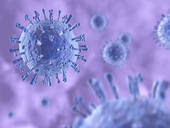There are many causes of low back pain (LBP). Most of us can think of the time we bent over to lift a child, the heavy tongue of a trailer, a 5-gallon pail of water, or maybe simply sneezed too hard and threw out our back. These causes are common and most often associated with LBP. But, one unusual cause of LBP (not so unusual once you know about it) involves Vitamin D deficiency. Yes, you heard me – a VITAMIN DEFICIENCY!
One study reported on a 360 patient (90% women, 10% men) group being treated at spinal and internal medicine clinics over a 6-year time frame for LBP of 6 months or greater with no obvious cause. Doctors tested these patients for blood levels of vitamin D (25-hydroxy vitamin D), as well as calcium and alkaline phosphatase (an enzyme found in bone). Then, they administered Vitamin D supplements and the same tests were repeated. Their results are VERY INTERESTING! The findings showed 83% of the group studied (299 patients) had abnormally low levels of vitamin D before supplementation and after treatment of ONLY vitamin D, clinical improvement was seen in ALL the groups that had low vitamin D levels and in 95% of all 360 patients! THAT’S AMAZING!
They concluded “Vitamin D deficiency is a major contributor to chronic low back pain,” and recommend screening for vitamin D deficiency and treatment with supplements which they say, “…should be mandatory...,” especially in areas that are “endemic” for vitamin D deficiency. They also conclude that bone softening diseases like osteomalacia may occur as a result of vitamin D deficiency, while many other studies have linked vitamin D deficiency with osteoporosis. Another question then arises, what geographic regions are most susceptible to low sunlight and hence, vitamin D deficiency?
One study showed that during the 8 months centered around summer in the US (March-October), for all locations from the southern tip of Texas to just south of Portland, OR, no difference was found in the vitamin D levels. But, in the winter months (November-February), a significant difference was seen where as latitude increased northward, the amount of vitamin D decreased “dramatically.” However, in lower latitudes (< 25 degrees), no difference was found between summer vs. winter months. What about sun block? Does using it reduce vitamin D absorption from the sun? The answer is, YES. On “The Peoples Pharmacy” website, it was reported that the typical dose of vitamin D of 400 IU “…is probably inadequate to overcome a deficiency.” They recommend 10-15 minutes of time in the sun without sunscreen a few times a week or a higher dose of vitamin D3 (“…closer to 2000 IU of vitamin D”).
There are many other benefits – not just in terms of LBP – from taking vitamin D that have good scientific support. In fact, a PubMed search for “benefits of vitamin D” resulted in 554 studies, some of which included conditions such as, HIV, heart conditions (many), chronic illness in the elderly, osteoporosis, cancers (colorectal, prostate, breast and others), kidney disease, autoimmune diseases (celiac disease, MS, rheumatoid arthritis, many others), types I & II diabetes, and more! You get the picture, I’m sure.








